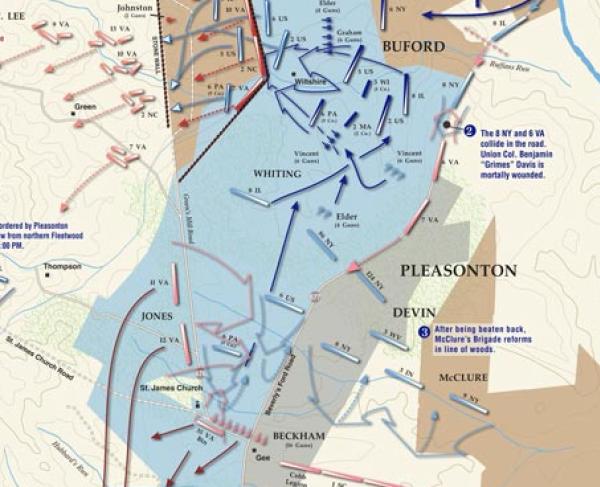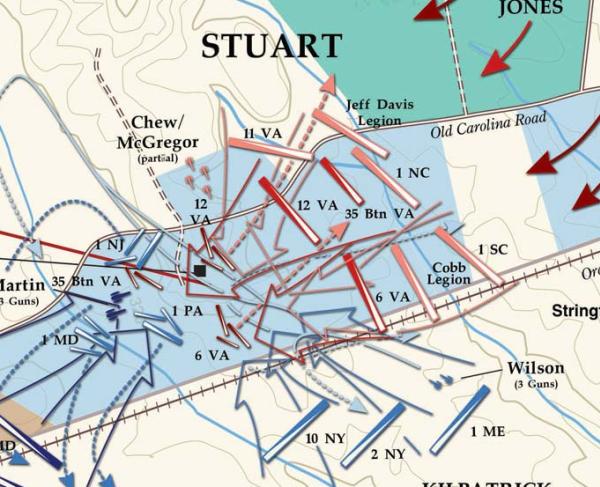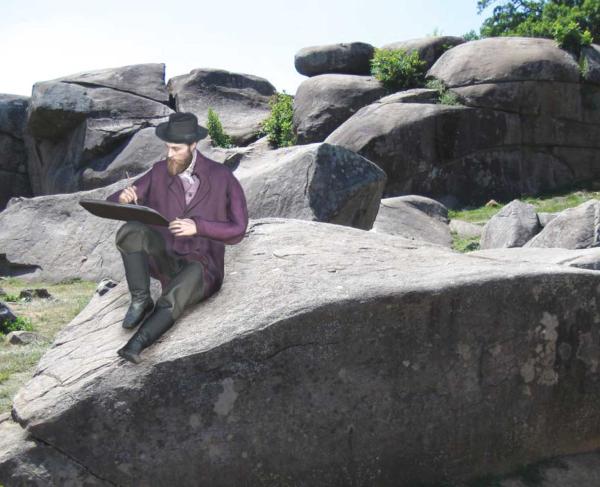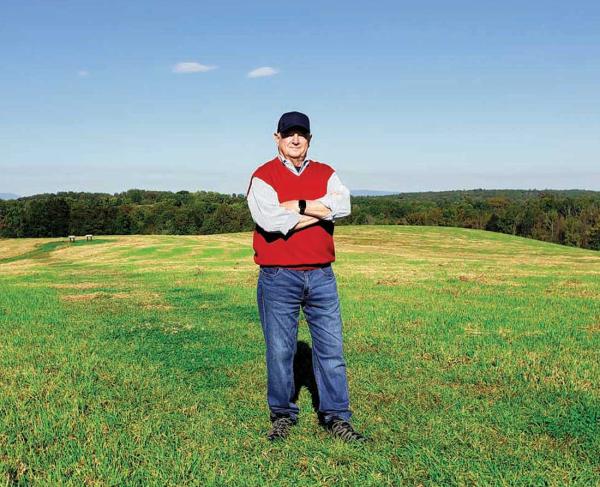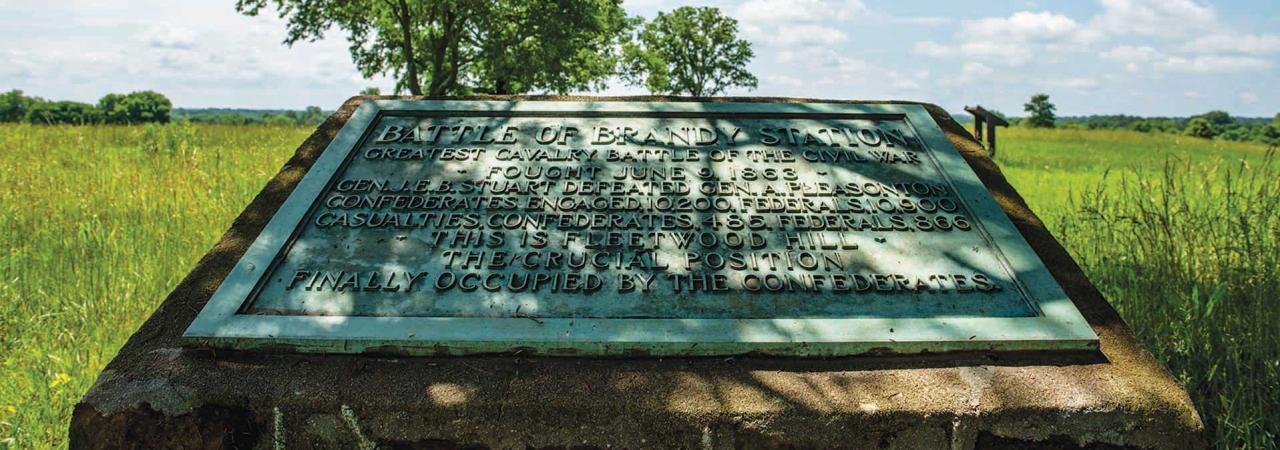
Fleetwood Hill restored to its 1863 appearance and with interpretive signage.
The journey of Virginia’s Brandy Station Battlefield from one of the nation’s 11 Most Endangered Historic Places in 1993 to the Commonwealth’s 43rd state park this summer is the stuff of preservation legend. It is a tale of remarkable resolve, tremendous tenacity and long-term vision by a host of entities over the course of decades — beginning with the Trust’s predecessor organization, the Association for the Preservation of Civil War Sites (APCWS), and extending through Virginia Governor Glenn Youngkin and his administration — that moved from impassioned advocacy fight to the donation of more than 2,000 acres across the battlefields at Brandy Station, Cedar Mountain, Kelly’s Ford and Rappahannock Station, plus Hansbrough’s Ridge, site of a Union army encampment in 1863-64.
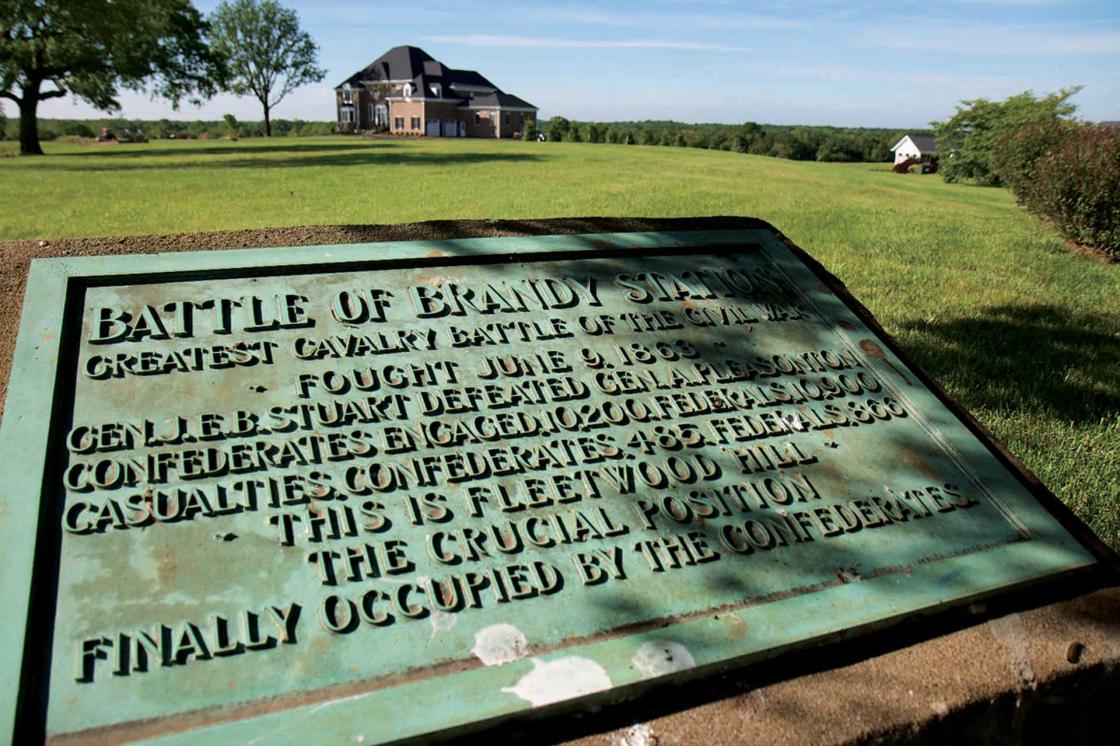
Creation of the park in the heart of the bucolic Virginia Piedmont was approved by the Virginia General Assembly and signed into law by Gov. Youngkin as part of the Commonwealth’s two-year budget plan in June 2022, after seven years of behind-the-scenes discussions. In addition to clearing the way for the Trust and Brandy Station Foundation to donate land outright to the state, the budget also appropriated a further $3 million for the Trust to acquire 800 more acres of historic land that will augment the overall experience for park visitors.
The first big threat to Culpeper County’s battlefields came in the early 1990s, when 1,500 acres at Brandy Station were rezoned for commercial development. The racetrack proposal demonstrated the vulnerability of the battlefield to development, spurring APCWS to acquire in 1997 a 571-acre tract on the northern part of the battlefield around Buford’s Knoll. The vulnerability of this crucial battlefield demonstrated, land acquisition efforts began in earnest and in 1997, APCWS purchased a 571-acre tract in the northern part of the battlefield around Buford’s Knoll.
While the Battle of Brandy Station raged across thousands of acres of the Virginia countryside, the key to the battlefield was Fleetwood Hill. This was the site of General J.E.B. Stuart’s headquarters. Thousands of troopers engaged in fierce combat at close quarters in an attempt to claim this crucial strategic position. In 2008, the Civil War Trust took its first steps toward preserving this land, acquiring not one, but two crucial tracts on both sides of the hill. For the first time in 150 years, the land where Stuart’s cavalry faced off against General David Gregg’s Union troopers for control of the Virginia countryside had been at least partially preserved. But there was much more work to be done.
In 2009 and 2010, two landowners donated conservation easements on their land to the Commonwealth of Virginia, ensuring the preservation of 782 acres. These easements permanently prevented any kind of development on two tracts, including a large section of the battlefield north of Fleetwood Hill. One of these tracts included the stone wall that Rooney Lee’s Confederate troopers used in their defense against Buford’s men. Preserving this land not only prevented the destruction of this hallowed ground, but also connected two major pieces of the battlefield.
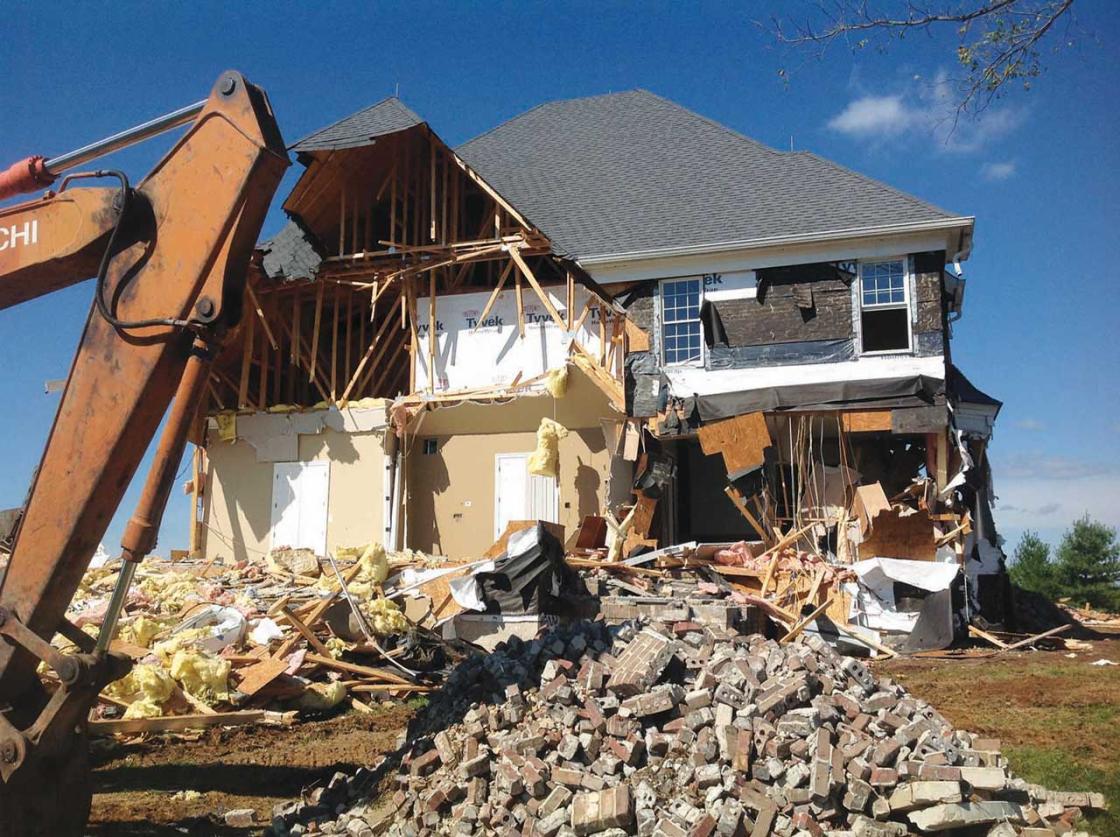
But the crest of Fleetwood Hill — called by historian Clark B. “Bud” Hall the “most fought-upon, marched-upon, and camped-upon piece of ground in American history,” was still in private hands, crowned by a large modern house. Thankfully, after negotiations, the landowner was willing to sell to the Trust and, in 2013, the organization embarked on a $3.6 million fundraising campaign to purchase and restore the 56-acre property to its wartime appearance. Thanks to member donations, matching grants from the federal American Battlefield Protection Program and the Commonwealth of Virginia, plus assistance from the Central Virginia Battlefields Trust, reclamation work began the following year.
The plan approved by the Virginia Department of Historic Resources, which holds a conservation easement on the property, was the most ambitious then undertaken by the Trust. It included removal of two houses, a detached garage, two in-ground pools, and a pool house, the aluminum barn having already been relocated for the benefit of the local 4-H club. Only a well that predates the Civil War remains on the hill, and a paved area now serves as a parking area. An interpretive trail was added, complementing those previously accessible on Buford’s Knoll and leading to St. James Church, and based on historic photographs and maps, trees were replanted to resemble those in place during the battle. According to the remarks of former Virginia House of Delegates Speaker William J. Howell at the site’s dedication, the effort was “a first-class example of successes the Commonwealth can achieve through public-private partnerships.”
“This particular land is the true heart and soul of the battlefield,” former Trust President James Lighthizer said at the time. “Thanks to partners such as the Central Virginia Battlefields Trust, the Journey Through Hallowed Ground, and the Brandy Station Foundation, as well as donors who contributed funds above and beyond the purchase price, we can … watch the years roll away and reveal the 19th-century landscape.”
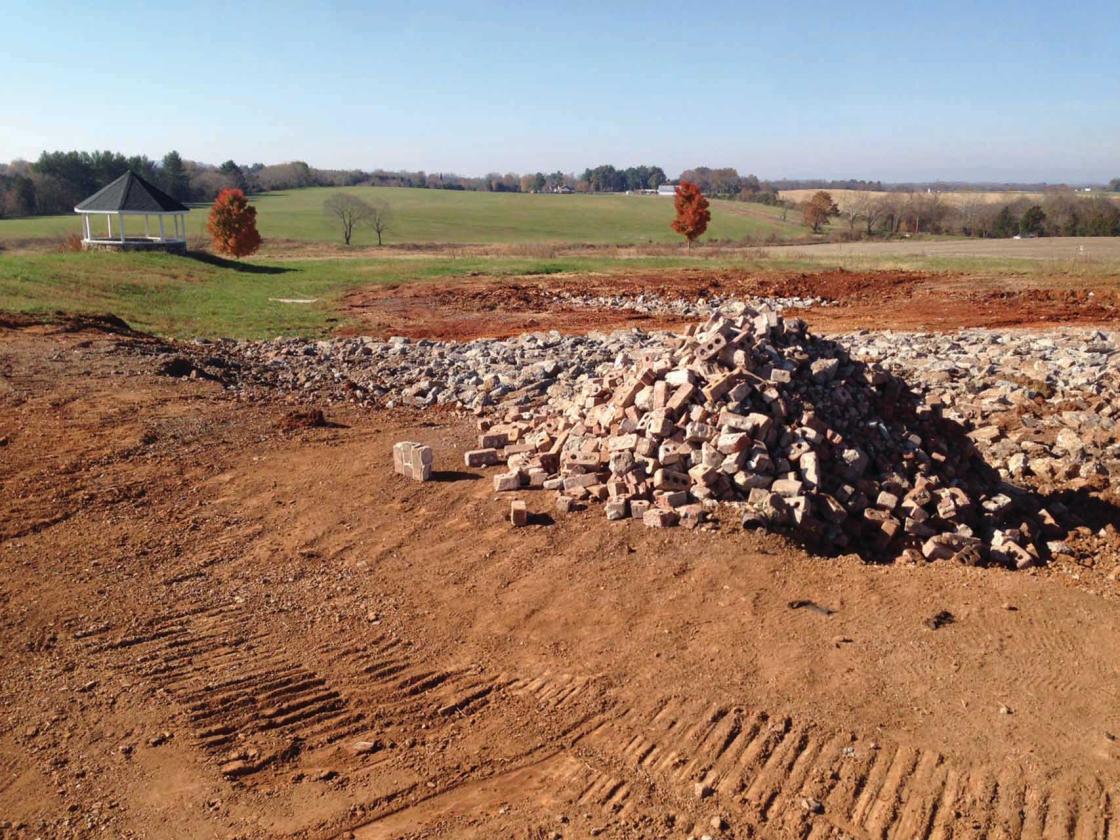
“At the American Battlefield Trust, we are fond of saying that ‘we build parks and tell stories,’ some of the greatest stories in American history. In this instance, we mean it especially literally — the creation of this new state park is the culmination of hard work across long years,” says Trust President David Duncan. “First, the preservation of this land, both safeguarding it from threats of inappropriate development and then its outright purchase. But also, significant effort to demonstrate that this new park will be a meaningful addition to Virginia’s landscape in terms of recreation opportunities and economic potential via heritage tourism.”
Playing a major role in the entire process has been Virginia State Senator Bryce Reeves, who has long pushed for a state park such as this in Culpeper County. He worked diligently with Gov. Youngkin to get state park approval included in the state's 2022 biennial budget. “I look forward to the day when Virginians and visitors from throughout the country can learn about our nation’s history by visiting these hallowed grounds,” Reeves told the Friends of Culpeper Battlefields blog.
Help raise the $429,500 to save nearly 210 acres of hallowed ground in Virginia. Any contribution you are able to make will be multiplied by a factor...
Related Battles
866
433
